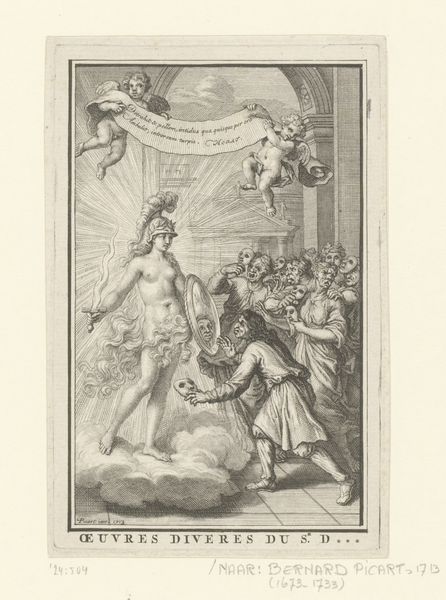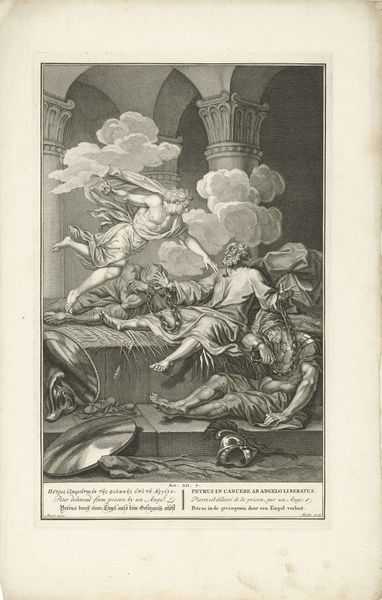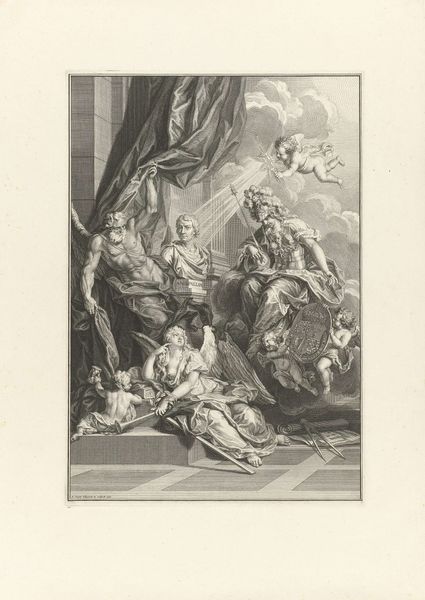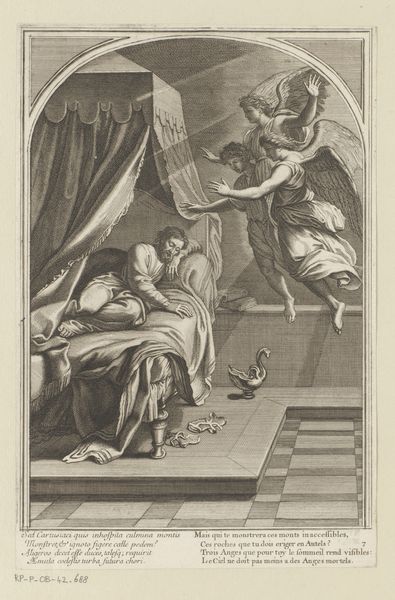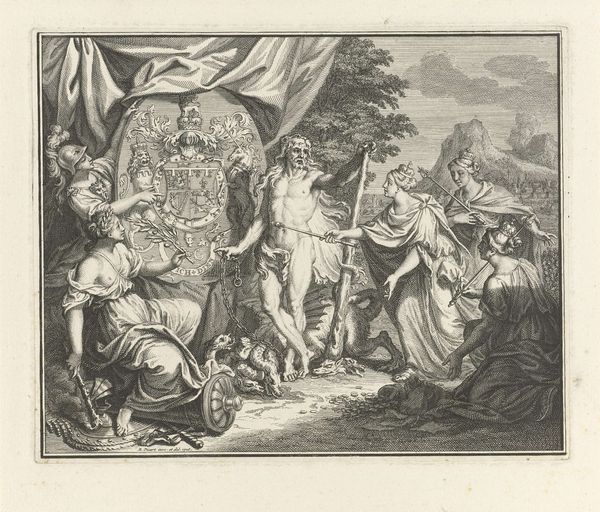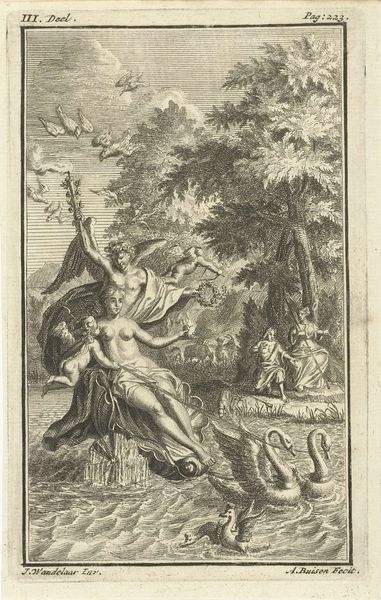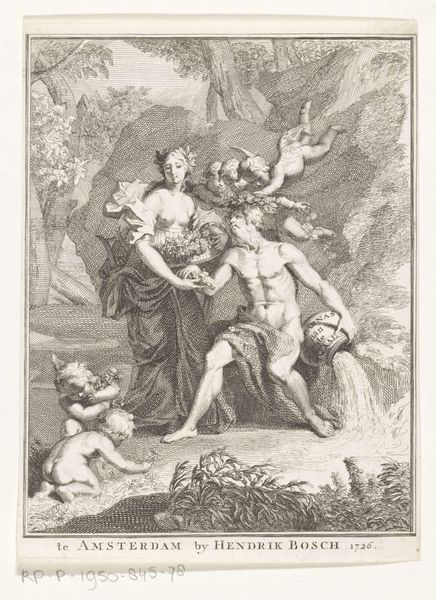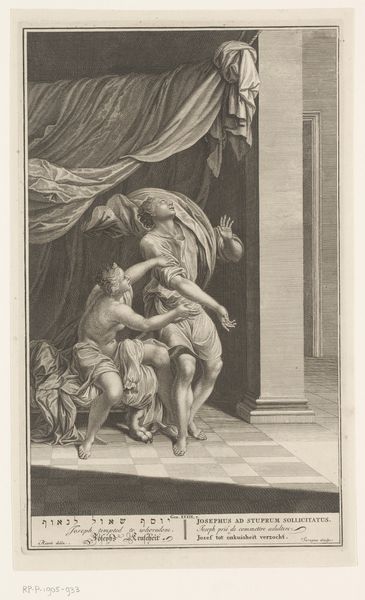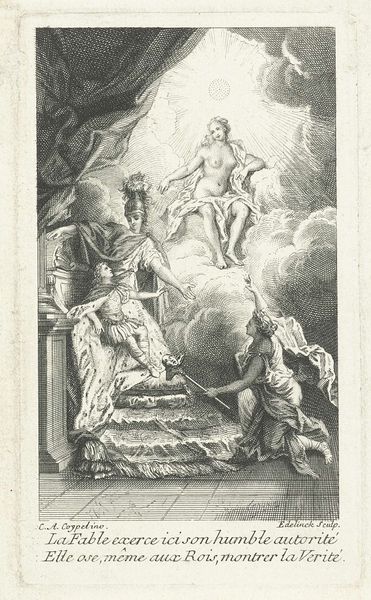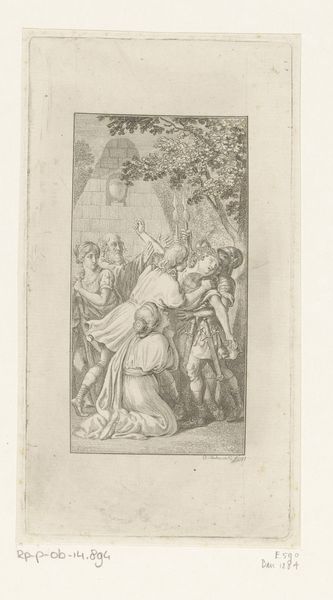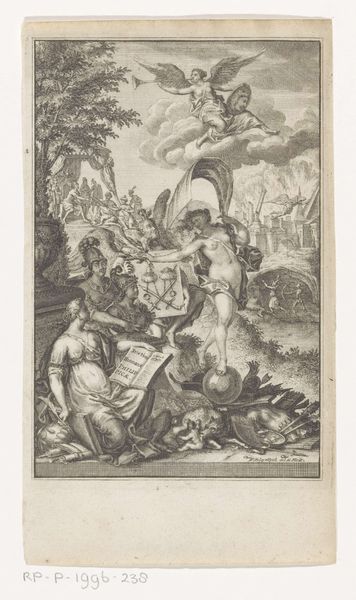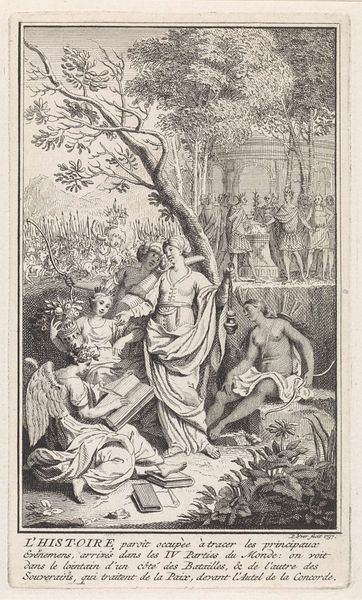
engraving
#
narrative-art
#
baroque
#
old engraving style
#
figuration
#
line
#
history-painting
#
engraving
Dimensions: height 347 mm, width 225 mm, height 342 mm
Copyright: Rijks Museum: Open Domain
Curator: What an evocative scene! The Rijksmuseum holds this engraving by François Chauveau, created sometime between 1623 and 1676. It’s titled "Verschijning van de Heilige Bruno aan de Comte Roger," or "The Apparition of Saint Bruno to Count Roger" in English. Editor: My initial sense is one of dramatic interruption. There’s this very physical presence of the Saint juxtaposed with the Count’s obvious distress. The whole scene feels charged with sudden realization. Curator: The composition is carefully arranged, wouldn't you agree? Chauveau’s choice of line, so characteristic of the Baroque, helps guide the eye. Saint Bruno appears almost as a specter, materializing to interrupt the Count’s earthly concerns. Look at the contrast between Bruno's austere robes and Roger’s luxurious bedclothes! Editor: Indeed. And those soldiers—their postures tell a story of duty disrupted, of earthly power confronted by spiritual authority. The spear and shield feel almost discarded, irrelevant in the face of the divine intervention. The man weeping seems utterly overcome, which must surely mean something. What could all these powerful symbols suggest to viewers of that time? Curator: That weeping man may indicate repentance. Saint Bruno's appearance at that particular moment certainly must mean that he has to correct earthly, violent behavior. The composition echoes traditional depictions of divine intervention. The dramatic arrival signals a pivotal moment, which will trigger a shift in Roger's outlook. Engravings such as this, circulated widely. The Saint Bruno depicted is meant to connect back to broader understanding of Saintly presence. Editor: So it functions on multiple levels—as a devotional image and a record of a historical or legendary event. This interplay of faith, power, and visual culture offers so many ways into understanding 17th-century worldviews. What does this artwork say about how we continue to interpret history through symbolic form? Curator: I think the appeal of images lies in this symbolic structure itself and these are designed to offer insight across centuries into culture and memory. Editor: Agreed. Chauveau's engraving presents us with this unique perspective, prompting a continuous reflection on cultural memory.
Comments
No comments
Be the first to comment and join the conversation on the ultimate creative platform.
